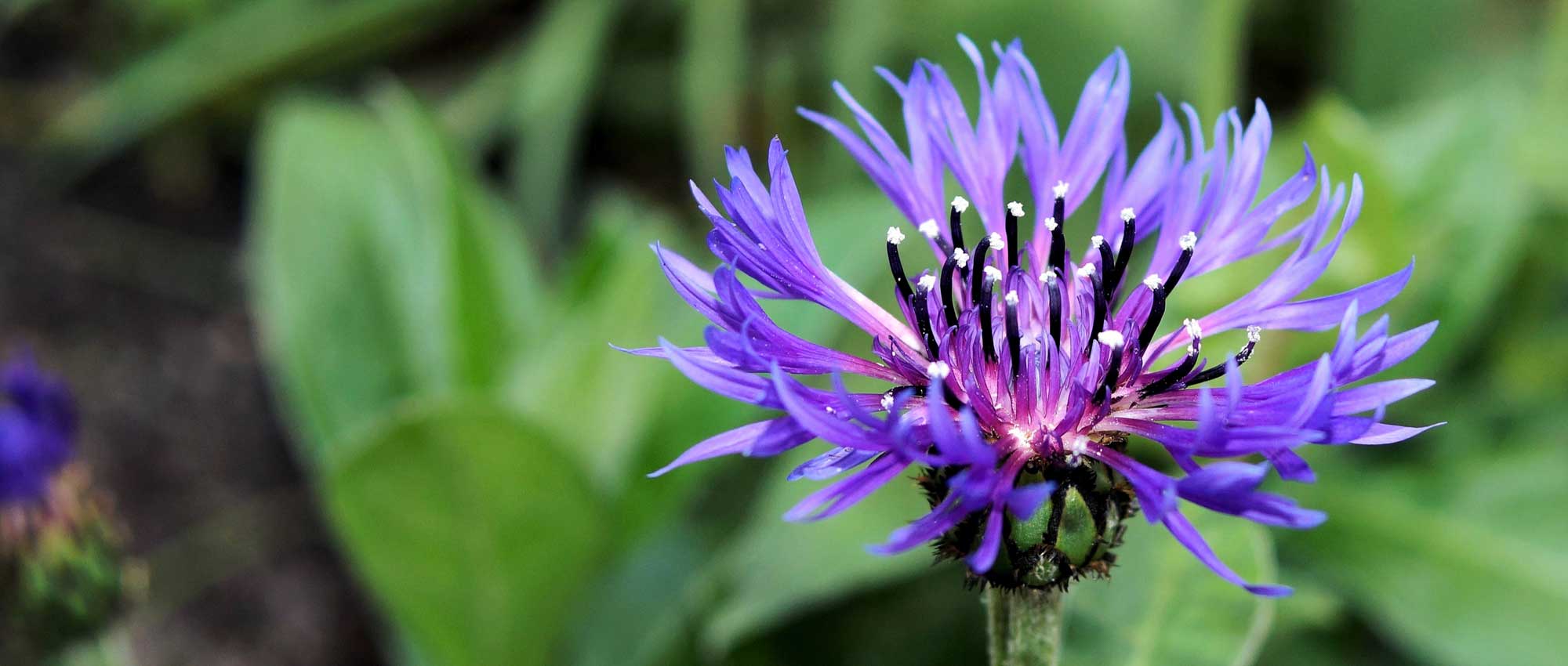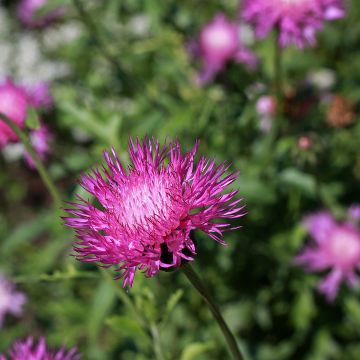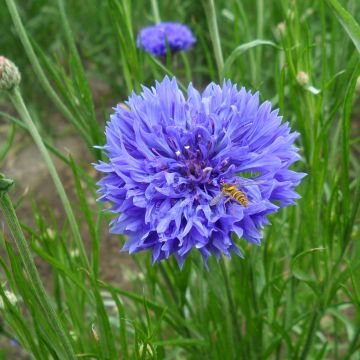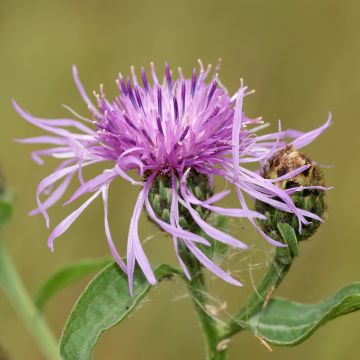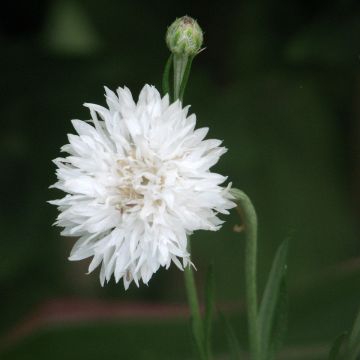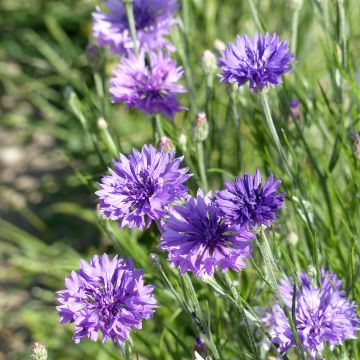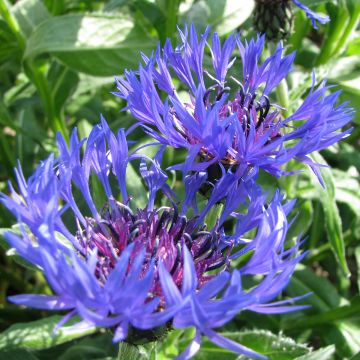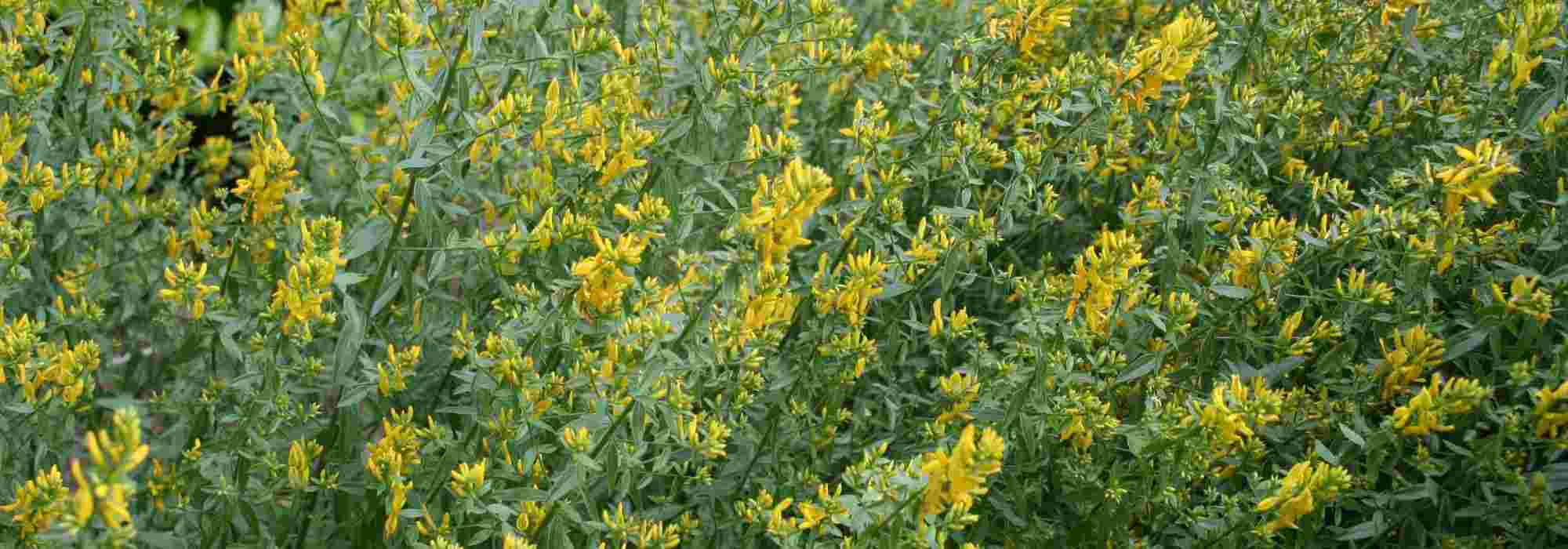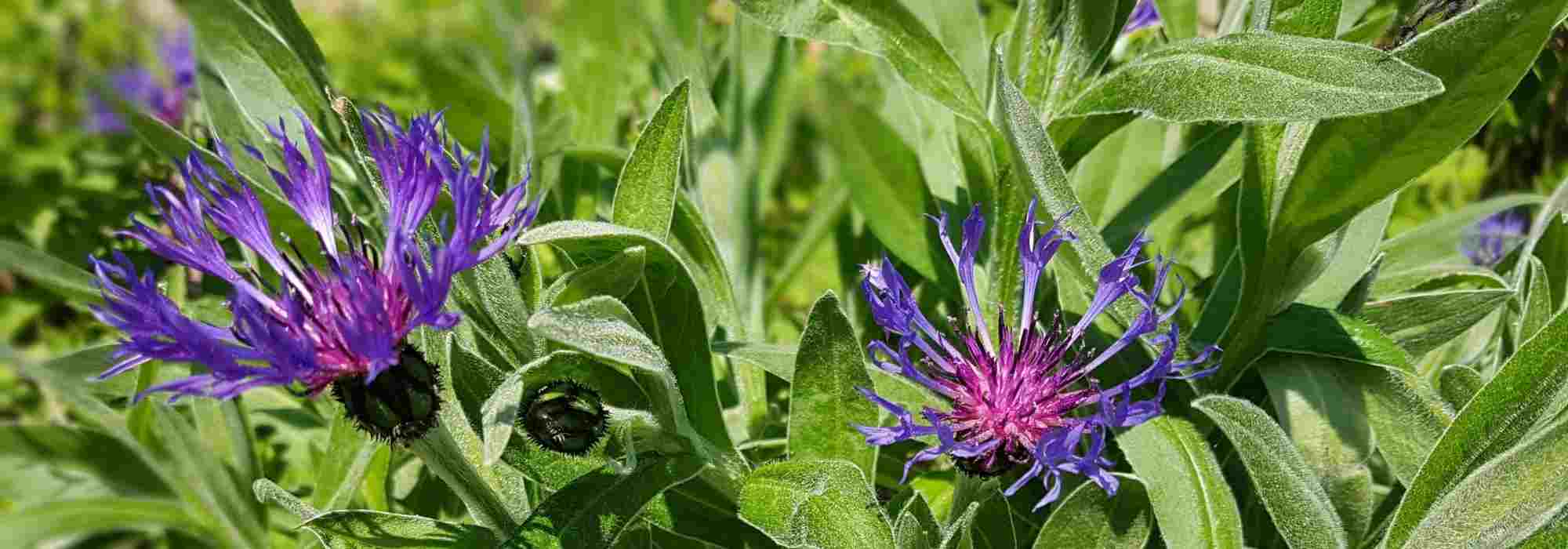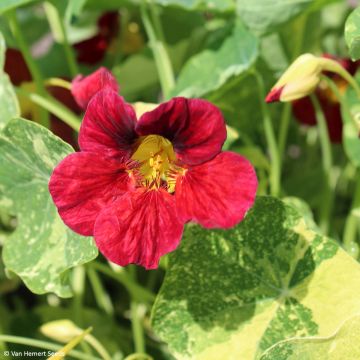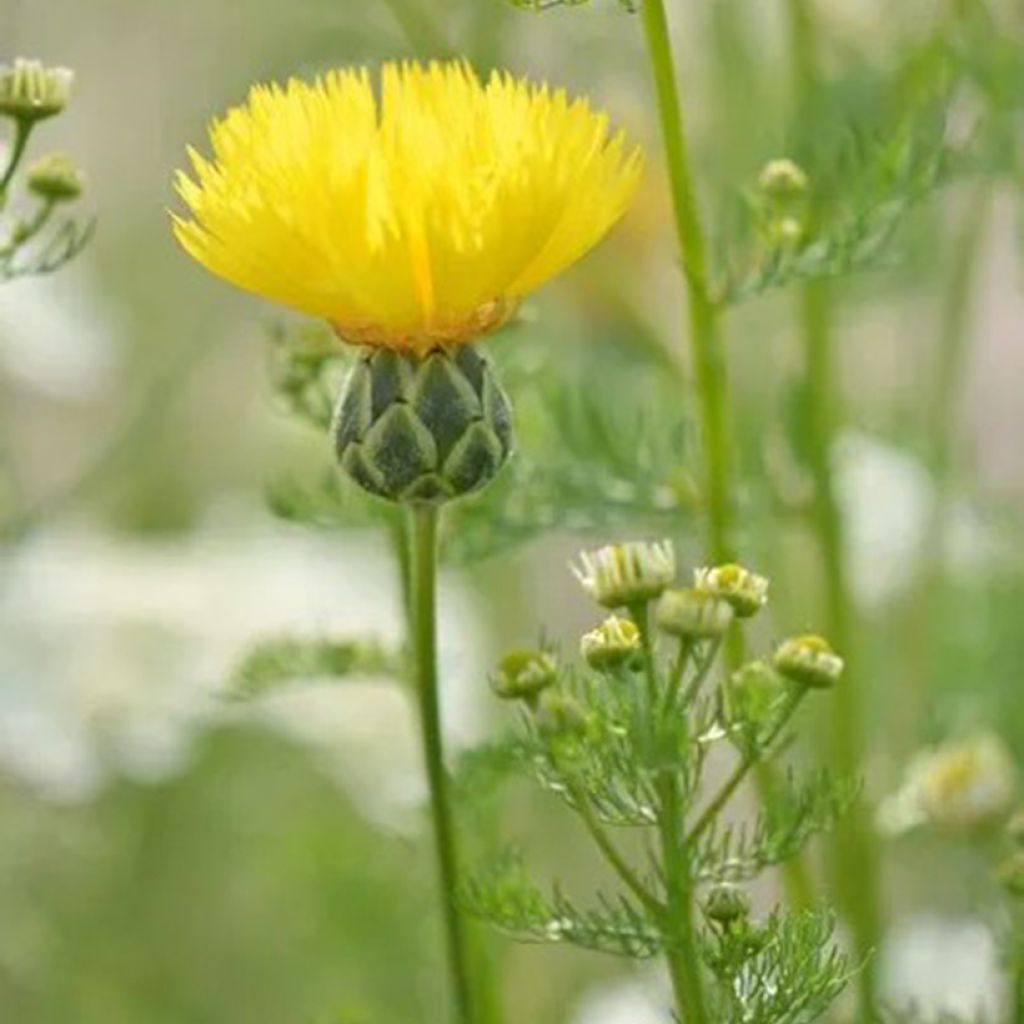

Centaurea The Bride - Seeds
Centaurea The Bride - Seeds
Centaurea suaveolens Jaune
Sweet Sultan
Special offer!
Receive a €20 voucher for any order over €90 (excluding delivery costs, credit notes, and plastic-free options)!
1- Add your favorite plants to your cart.
2- Once you have reached €90, confirm your order (you can even choose the delivery date!).
3- As soon as your order is shipped, you will receive an email containing your voucher code, valid for 3 months (90 days).
Your voucher is unique and can only be used once, for any order with a minimum value of €20, excluding delivery costs.
Can be combined with other current offers, non-divisible and non-refundable.
Home or relay delivery (depending on size and destination)
Schedule delivery date,
and select date in basket
This plant carries a 6 months recovery warranty
More information
We guarantee the quality of our plants for a full growing cycle, and will replace at our expense any plant that fails to recover under normal climatic and planting conditions.
Would this plant suit my garden?
Set up your Plantfit profile →
Description
Centaurea The Bride, with its beautifully scented, white, pompom-shaped flowers deserves to be planted more often in our gardens. It is derived from sweet sultan, an annual species native to Iran. This variety flowers for a long time in summer in sunny beds and will allow you to create pretty fresh or dried wildflower bouquets. This magnificent white cornflower is perfect for filling gaps in flowerbeds. It can be directly sown in its final position, in spring or late summer, and is easy to grow in ordinary, moist to dry soil.
Originally from Western Asia, more precisely the Caucasus, Iran, Iraq and Turkey, Centaurea moschata (synonym Amberboa moschata), is not the best known of the genus. This annual or biennial plant is also known as 'Sweet Sultan' and contains aromatic substances reminiscent of amber in its flowers and seeds. It belongs to the Asteraceae family, as shown by the arrangement of its flower heads.
The cultivar 'The Bride' was selected for its white flowers. This plant reaches 50-60 cm high when in bloom and grows into an erect clump of thin, leafy stems emerging from a mound of grey-green, fairly large, cut, 10 to 25 cm long basal leaves, with serrated margins. The leaves on the stems are smaller and divided into densely toothed, linear segments. Flowering takes place from July to September. The flower heads appear at the end of the stems and resemble fully double cornflowers, in the form of 5 to 8 cm wide pompons. They open from beautiful, scaly buds and are composed of a multitude of fertile and sterile florets that are cream-coloured in the centre and pure white at the edges. The mildly scented, nectar-rich blooms attract many foraging insects. This plant is hardy down to -12 °C. In milder climates, you can sow them at the end of summer which will produce earlier flowers.
This sweet sultan, once found in many monastic gardens, has been cultivated for over 350 years but is now mostly neglected by modern-day gardeners. This medium-sized plant is particularly well suited to perennial borders and works wonders when sown randomly among other plants. Its airy, bright blooms will look good in a white garden or a wildflower meadow, making a good companion for other flowers. To achieve this you can mix cornflower, grasses, sainfoin, ornamental onion, borage, common motherwort, corn marigold, Eschscholzia californica, cosmos and love-in-a-mist. It is easily sown in container displays. It is also an excellent cut flower for dried or fresh floral compositions.
Flowering
Foliage
Plant habit
Botanical data
Centaurea
suaveolens
Jaune
Asteraceae
Sweet Sultan
Amberboa amberboi, Centaurea moschata var. amberboi, Centaurea amberboi, Centaurea suaveolens, Amberboa suaveolens
West Asia
Other Centaurea seeds
View all →Planting and care
Sowing instructions:
Sow sweet sultan from March to April or from August to September, preferably directly in their final positions since their roots resent being disturbed.
Choose a very sunny position with well-drained soil. Prepare the soil by raking it to a fine tilth and removing all weeds. Sow at a depth of 6 mm, in hole 30 cm apart. Water regularly with a watering can, especially during dry periods. Germination usually takes 14-21 days. When the seedlings are large enough to be handled, thin them out and plant out to 30 cm apart.
Growing instructions:
Centaurea moschata prefers light, even sandy, well-drained soil and full sun. This plant thrives in moist to moderately dry soil and doesn't tolerate excessive moisture in winter and heavy soil. It is very adaptable and tolerates short periods of drought and limestone quite well. Remove the wilted flowers to encourage more blooms. This robust and hardy annual plant will thrive in all regions.
Sowing period
Intended location
Planting & care advice
This item has not been reviewed yet - be the first to leave a review about it.
Similar products
Haven't found what you were looking for?
Hardiness is the lowest winter temperature a plant can endure without suffering serious damage or even dying. However, hardiness is affected by location (a sheltered area, such as a patio), protection (winter cover) and soil type (hardiness is improved by well-drained soil).

Photo Sharing Terms & Conditions
In order to encourage gardeners to interact and share their experiences, Promesse de fleurs offers various media enabling content to be uploaded onto its Site - in particular via the ‘Photo sharing’ module.
The User agrees to refrain from:
- Posting any content that is illegal, prejudicial, insulting, racist, inciteful to hatred, revisionist, contrary to public decency, that infringes on privacy or on the privacy rights of third parties, in particular the publicity rights of persons and goods, intellectual property rights, or the right to privacy.
- Submitting content on behalf of a third party;
- Impersonate the identity of a third party and/or publish any personal information about a third party;
In general, the User undertakes to refrain from any unethical behaviour.
All Content (in particular text, comments, files, images, photos, videos, creative works, etc.), which may be subject to property or intellectual property rights, image or other private rights, shall remain the property of the User, subject to the limited rights granted by the terms of the licence granted by Promesse de fleurs as stated below. Users are at liberty to publish or not to publish such Content on the Site, notably via the ‘Photo Sharing’ facility, and accept that this Content shall be made public and freely accessible, notably on the Internet.
Users further acknowledge, undertake to have ,and guarantee that they hold all necessary rights and permissions to publish such material on the Site, in particular with regard to the legislation in force pertaining to any privacy, property, intellectual property, image, or contractual rights, or rights of any other nature. By publishing such Content on the Site, Users acknowledge accepting full liability as publishers of the Content within the meaning of the law, and grant Promesse de fleurs, free of charge, an inclusive, worldwide licence for the said Content for the entire duration of its publication, including all reproduction, representation, up/downloading, displaying, performing, transmission, and storage rights.
Users also grant permission for their name to be linked to the Content and accept that this link may not always be made available.
By engaging in posting material, Users consent to their Content becoming automatically accessible on the Internet, in particular on other sites and/or blogs and/or web pages of the Promesse de fleurs site, including in particular social pages and the Promesse de fleurs catalogue.
Users may secure the removal of entrusted content free of charge by issuing a simple request via our contact form.
The flowering period indicated on our website applies to countries and regions located in USDA zone 8 (France, the United Kingdom, Ireland, the Netherlands, etc.)
It will vary according to where you live:
- In zones 9 to 10 (Italy, Spain, Greece, etc.), flowering will occur about 2 to 4 weeks earlier.
- In zones 6 to 7 (Germany, Poland, Slovenia, and lower mountainous regions), flowering will be delayed by 2 to 3 weeks.
- In zone 5 (Central Europe, Scandinavia), blooming will be delayed by 3 to 5 weeks.
In temperate climates, pruning of spring-flowering shrubs (forsythia, spireas, etc.) should be done just after flowering.
Pruning of summer-flowering shrubs (Indian Lilac, Perovskia, etc.) can be done in winter or spring.
In cold regions as well as with frost-sensitive plants, avoid pruning too early when severe frosts may still occur.
The planting period indicated on our website applies to countries and regions located in USDA zone 8 (France, United Kingdom, Ireland, Netherlands).
It will vary according to where you live:
- In Mediterranean zones (Marseille, Madrid, Milan, etc.), autumn and winter are the best planting periods.
- In continental zones (Strasbourg, Munich, Vienna, etc.), delay planting by 2 to 3 weeks in spring and bring it forward by 2 to 4 weeks in autumn.
- In mountainous regions (the Alps, Pyrenees, Carpathians, etc.), it is best to plant in late spring (May-June) or late summer (August-September).
The harvesting period indicated on our website applies to countries and regions in USDA zone 8 (France, England, Ireland, the Netherlands).
In colder areas (Scandinavia, Poland, Austria...) fruit and vegetable harvests are likely to be delayed by 3-4 weeks.
In warmer areas (Italy, Spain, Greece, etc.), harvesting will probably take place earlier, depending on weather conditions.
The sowing periods indicated on our website apply to countries and regions within USDA Zone 8 (France, UK, Ireland, Netherlands).
In colder areas (Scandinavia, Poland, Austria...), delay any outdoor sowing by 3-4 weeks, or sow under glass.
In warmer climes (Italy, Spain, Greece, etc.), bring outdoor sowing forward by a few weeks.






























